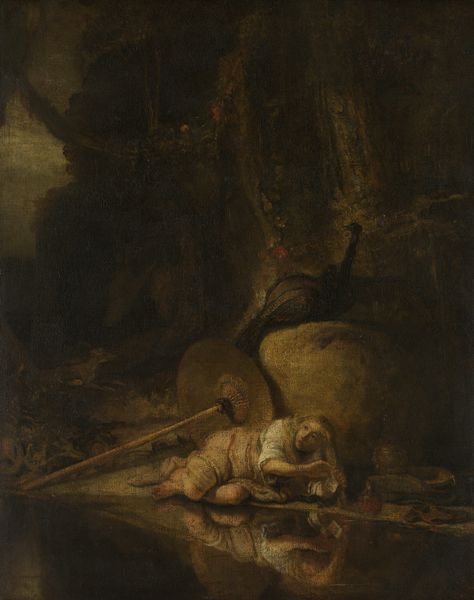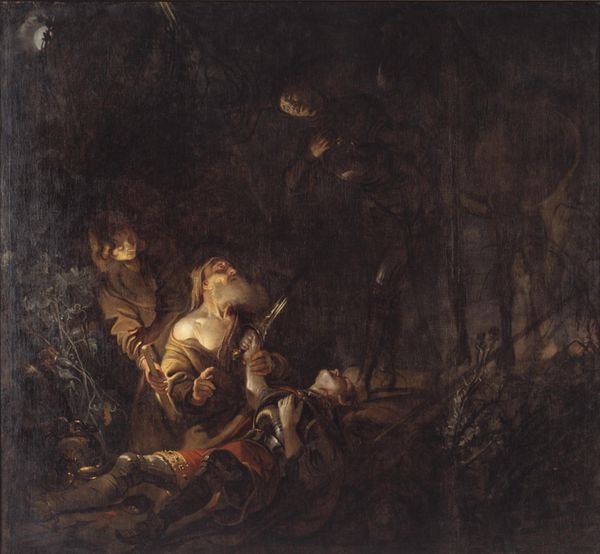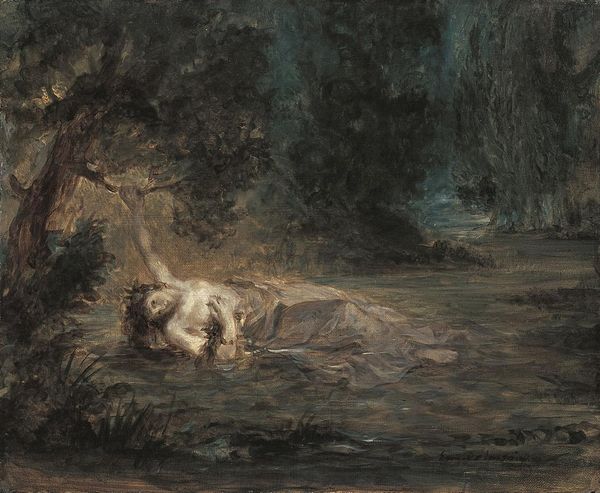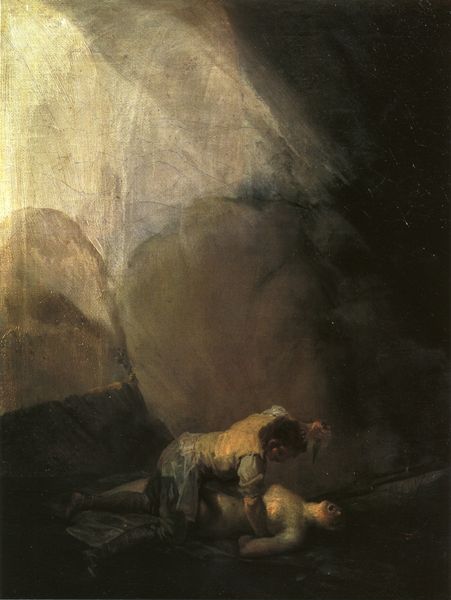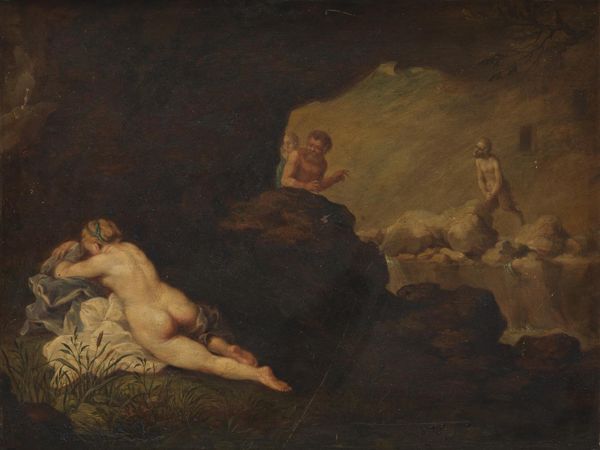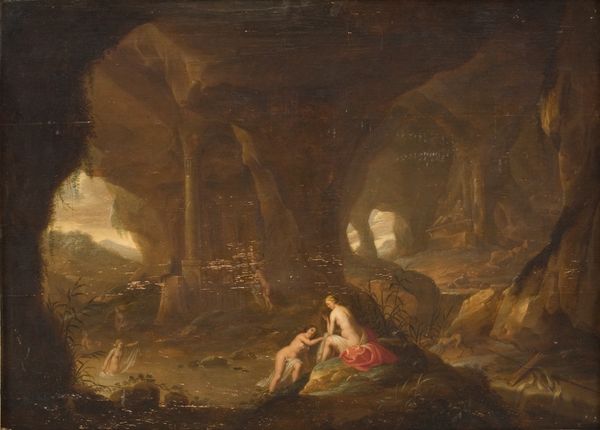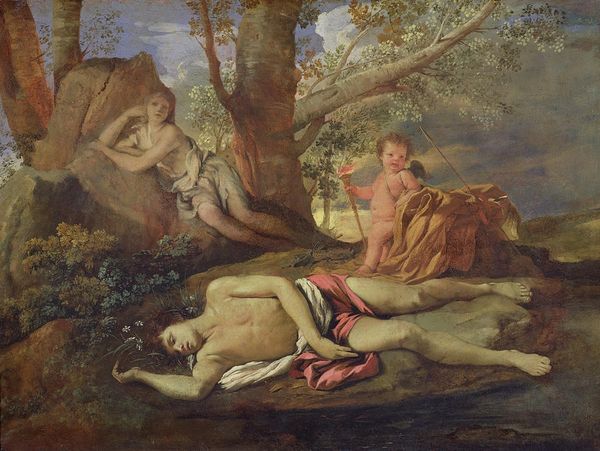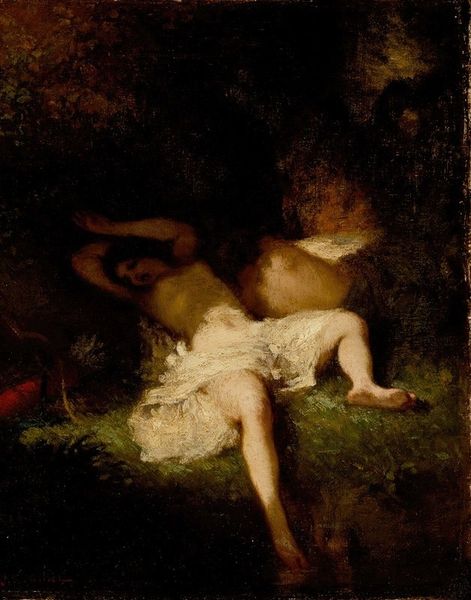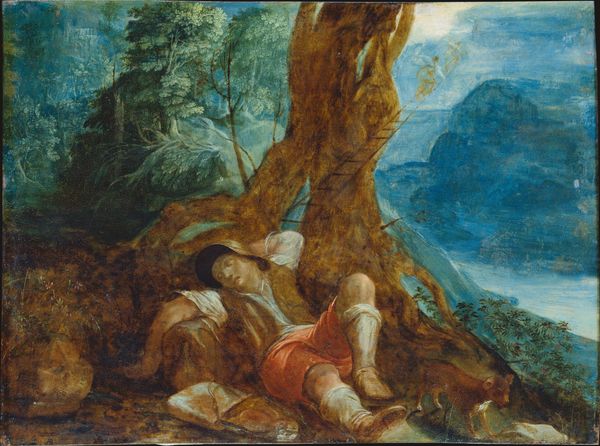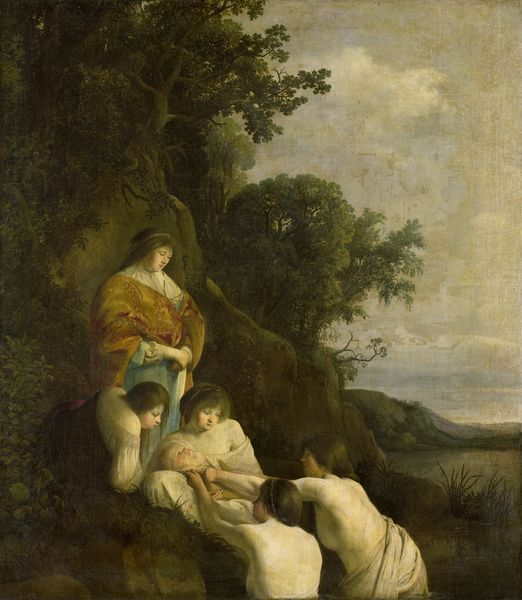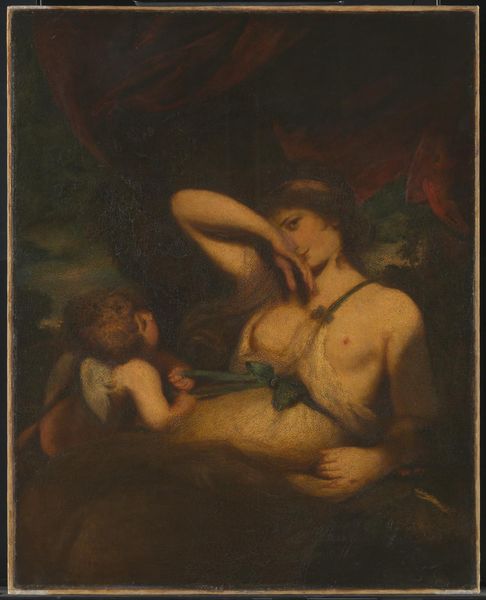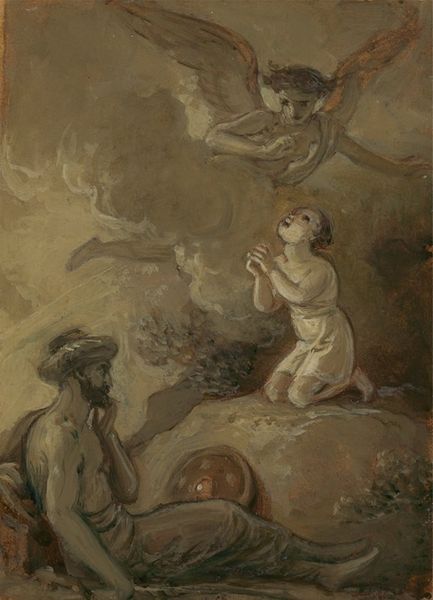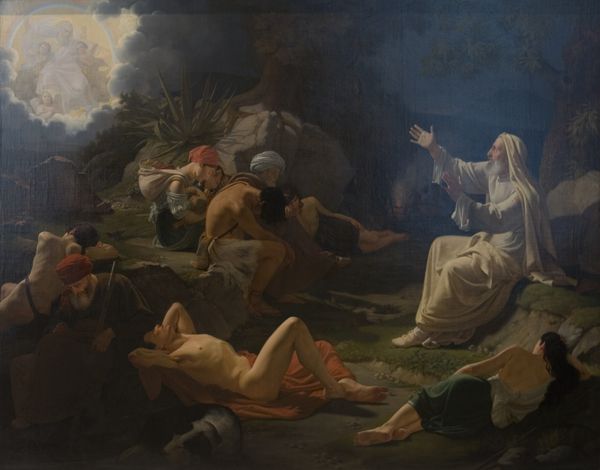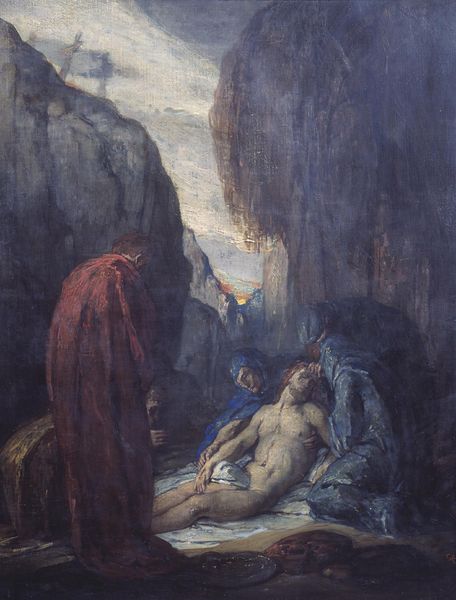
Hera Hiding During the Battle Between the Gods and the Giants 1643
0:00
0:00
carelfabritius
Rijksmuseum, Amsterdam, Netherlands
painting, oil-paint
#
allegory
#
baroque
#
painting
#
oil-paint
#
landscape
#
figuration
#
oil painting
#
genre-painting
#
history-painting
#
realism
Dimensions: 87 x 69.5 cm
Copyright: Public domain
Editor: This is Carel Fabritius's "Hera Hiding During the Battle Between the Gods and the Giants," painted in 1643 using oil. There's such a quiet stillness to the scene, considering the chaotic battle it’s meant to depict. What do you see in this piece, beyond the surface narrative? Curator: That stillness is exactly where the painting begins to speak volumes. Fabritius, by choosing this specific moment, isn’t just illustrating a myth. He's prompting us to consider power dynamics and gender within conflict. Hera, a goddess, is literally sidelined, hidden. What does it say about women's roles, even divine ones, in periods of upheaval? Editor: That's a good point. It feels like the piece challenges the glorification of battle, showing instead its impact on those who are forced to the margins. Curator: Precisely. Think about the period: the Thirty Years' War was still raging. Fabritius might be subtly critiquing the accepted narrative of heroism and valor by spotlighting the forced invisibility of a powerful figure like Hera. It raises the question, doesn't it: who is made to hide, and whose stories are erased by conflict? The details—her discarded parasol, her contemplative posture— hint at a loss of control, a denial of her agency. Editor: The dog fleeing from the cave and the battle give a glimpse of the macro perspective... I never considered the symbolism of those specific details as they amplify that narrative of being made invisible within the conflict. Curator: The beauty of art lies in its ability to hold these complex layers. Fabritius offers us not just a scene from mythology but a commentary on the human cost of power struggles, viewed through a distinctly gendered lens. It prompts reflection about visibility, agency, and the stories we choose to tell, or leave untold. Editor: This made me rethink this art's potential connection to our lives! Thanks for sharing all this.
Comments
No comments
Be the first to comment and join the conversation on the ultimate creative platform.
